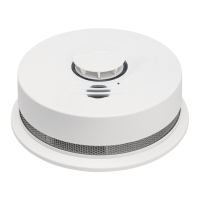16. Good Safety Habits
Develop and Practice a Plan of Escape
Practice the following steps to prepare you and your family in the event of a fire:
• Perform fire drills regularly. Use them to assure recognition of an alarm signal.
• Draw a floor plan and show two exits from each room. It is important that children be instructed carefully,
because they tend to hide in times of crisis.
• Establish one meeting place outside the home. Insist that everyone meet there during an alarm. This will
eliminate the tragedy of someone reentering the house for a missing member who is actually safe.
• If you have children or physically challenged people residing in your household, use window decals to
help emergency personnel identify the sleeping quarters of these individuals.
Current studies have shown smoke alarms may not awaken all sleeping individuals, and that it is the
responsibility of individuals in the household that are capable of assisting others to provide assistance to
those who may not be awakened by the alarms ound, or to those who may be incapable of safely evacuat-
ing the area unassisted.
Install and maintain fire extinguishers on every level of the home and in the kitchen, basement and garage.
Know how to use a fire extinguisher prior to an emergency.
Fire warning systems for dwelling units are capable of protecting about half of the occupants in potentially
fatal fires. Victims are often intimate with the fire, too old or young, or physically or mentally impaired such
that they cannot escape even when warned early enough that escape should be possible. For these
people, other strategies such as protection-in-place or assisted escape or rescue are necessary.
Fire Prevention
Never smoke in bed, or leave cooking food unattended. Teach children never to play with matches or
lighters! Train everyone in the home to recognize the smoke alarm pattern and to leave the home using
their escape plan when it’s heard. Know how to do “Stop, Drop and Roll” if clothes catch on fire, and how to
crawl low under smoke. Install and maintain fire extinguishers on every level of the home and in the kitchen,
basement and garage.NFPA (National Fire Protection Association)
Fire Safety in the Home: NFPA 72 is intended to provide reasonable safety for persons in family living
units. Reasonable fire safety can be produced through the following three-point program: (1) Minimizing fire
hazards (2) Providing fire-warning equipment (3) Having and practicing an escape plan.

